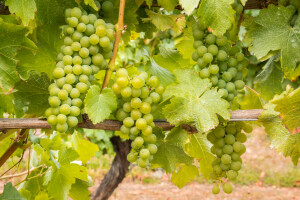 The rumors have been circulating for more than a year, and as of December 10 (2022) it’s official: a glass of Voltis (or at least a bit of Voltis in your Champagne) might be in your future.
The rumors have been circulating for more than a year, and as of December 10 (2022) it’s official: a glass of Voltis (or at least a bit of Voltis in your Champagne) might be in your future.
Back in August of 2021, the Growers’ Association in Champagne (Syndicat Général des Vignerons de la Champagne, or SGV) voted to allow limited plantings of the Voltis grape variety—a fungus-resistant, interspecific hybrid grape variety—for use in the wines of the Champagne AOC. As of November of 2022, the proposal was approved by France’s Institut National de l’Origine et de la Qualité (INAO), and the newly revised Cahier des Charges was published in the Journal Officiel de la République Française (Official Journal of the French Republic) on December 10, 2022.
Voltis contains DNA from Vitis vinifera, Vitis berlandieri, Vitis rupestris, and Vitis muscadinia. It was created via a collaboration between the INAO (Montpellier, France) and the Julius Kühn Institute (Siebeldingen, Germany). Classified as a fungus resistant PIWI variety (Pi = Pilz [fungus]; wi = widerstandsfähig [resistant]), Voltis is believed to be entirely resistant to powdery mildew and highly resistant to downy mildew.
Voltis is the first interspecific fungus resistant grape to be allowed for use in a French appellation d’origine contrôlée (AOC) product, and just the second hybrid grape so allowed—after Baco Blanc (Baco 22A), which is allowed for use in the brandies of the Armagnac AOC. The Voltis grape is part of a group of experimental grapes being reviewed throughout France as d’intérêt à fin d’adaptation (“of interest for the purpose of adaptation”) that are intended to allow for the expansion of organic viticulture (based on reduced need for chemical herbicides and fungicides) and to respond to the challenges of climate change.
Voltis produces medium-sized and moderately compact bunches. The berries are medium-sized, thick-skinned, and somewhat neutral in flavor.
For the time being, Voltis will be allowed in the wines of the Champagne AOC on a ten-year trial basis. Voltis may comprise no more than 5% of the vineyard area of any estate. This update follows on the heels of a similar change recently seen in Bordeaux.
Cheers to Voltis!
Note: As with all such updates, this change will need to wind its way through EU authorization; however, as the government of France has granted their approval, the changes are considered to be in force. If the EU fails to approve the amendment, the regulation will be rescinded.
References/for more information:
- CDC_Champagne updated with Voltis
- The Voltis Grape on the Catalogue des vignes cultivées en France
- The Voltis Grape (on the PIWI International website)
Post authored by Jane A. Nickles…your blog administrator: jnickles@societyofwineeducators.org
Hope to see it soon !